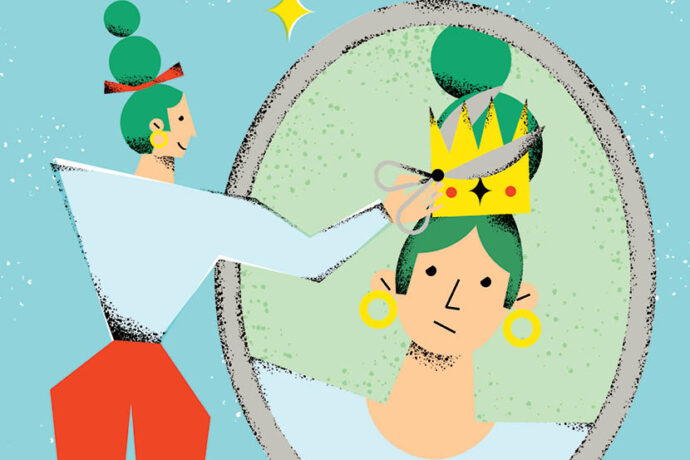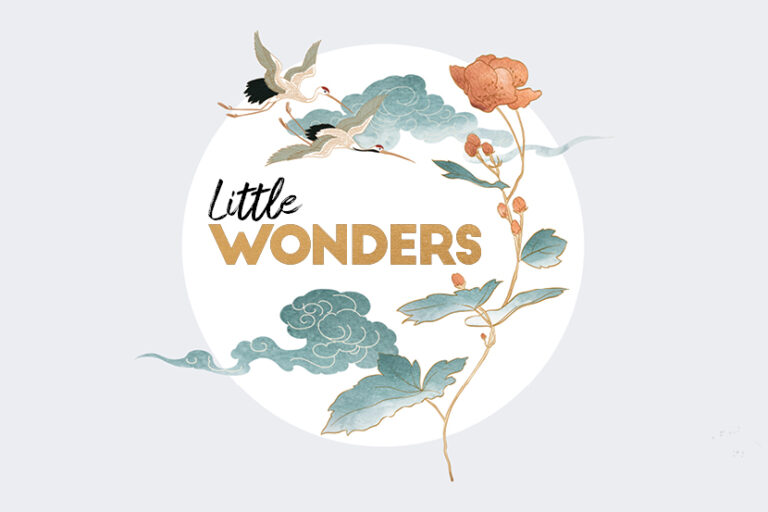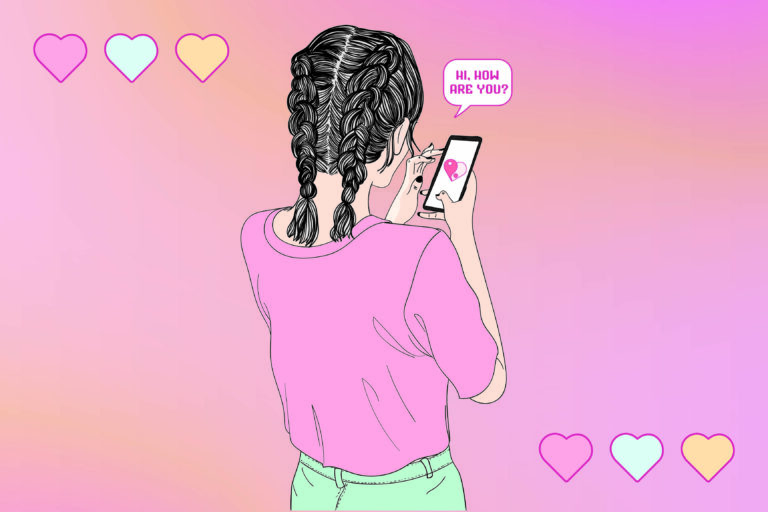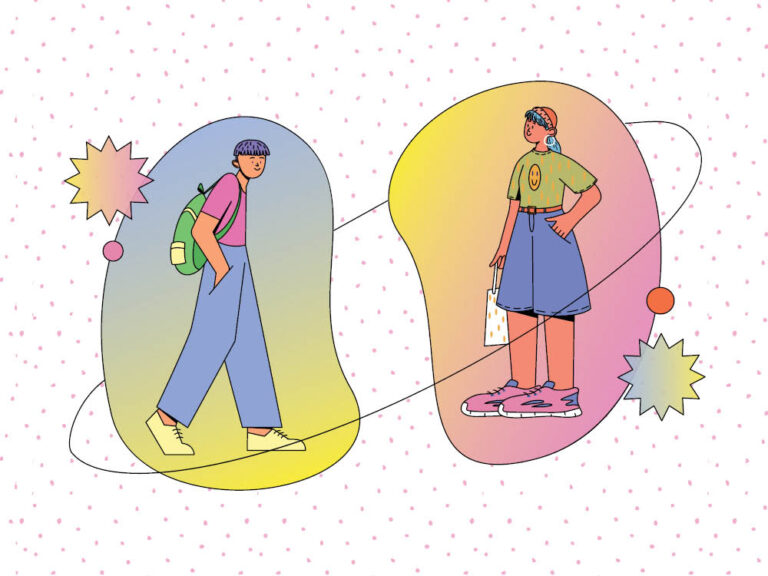
Why is making eye contact such a minefield?
Communication with the eyes is a fundamental part of being human, so much so that some scientists believe human eyes have evolved not just to see but also to be seen. We are the only primates to have highly visible whites – or sclera – that highlight the coloured irises and make it easier to determine the direction of a human gaze.
This evolutionary quirk encouraged kinship and cooperation among our ancestors. Visible eye movements allowed tribe members to read emotions, predict intentions and interact in nuanced ways, all of which had evolutionary advantages.
Today, a visual connection is one of the first milestones of babyhood. The newborn gaze can only focus around 30cm away, roughly the distance of a parent’s face when the baby is being cradled in their arms. This intimate space encourages eye contact and the first meaningful whispers of communication, prompting babies to become social beings.
Researchers at the Baby-LINC Lab at the University of Cambridge UK go as far as to say that eye contact enables parent and baby to synchronise their brainwaves. ‘When the adult and infant are looking at each other, they are signalling their availability and intention to communicate with each other,’ explains Dr Victoria Leong, lead author on the study. ‘Both adult and infant brains respond to a gaze signal by becoming more in sync with their partner. This mechanism could prepare parents and babies to communicate… which would also make learning more effective.’ Studies also reveal that babies prefer to look at faces above anything else.
Why then as adults – apart from the occasional eye-roll or raised eyebrow among friends – does the sensation of a locked gaze feel awkward, even nerve-racking? Too much eye contact can feel intense or confrontational, too little can come across as shifty or dismissive.
How to be more comfortable with the human gaze
Conventional wisdom holds that eye contact is a good thing, yet for many it often doesn’t come naturally. Research shows the tipping point between an easy connection and an uncomfortable stare comes down to a matter of seconds. According to a recent study, eye contact lasting more than 3.3 seconds becomes awkward. So, short of getting out the stopwatch, what measures can be taken to make it more agreeable?
Take cues from others
Prolonged eye contact is disrespectful in some parts of the world. Many Asian cultures, for example, use subtle eye contact to communicate. The best practice is to notice what the person you’re speaking to is doing and mirror it.
Pick your moment
While eye contact can foster trust in friendly situations, in adversarial moments it can come across as domineering. According to researcher Frances Chen of the University of Freiburg, Germany, if someone disagrees with your point of view, bombarding them with eye contact means they’re even less likely to be won over.
Don’t look down
You can break eye contact without losing your audience by looking to the side – which implies you’re thinking. Glancing downwards, however, suggests you’ve finished speaking.
Allow for thinking time
Eye contact can make it harder to think deeply. Maintaining eye contact draws on the same mental resources used to complete complex tasks, which explains why people often look away when trying to remember something. This is worth bearing in mind during interview situations, when prolonged eye contact, as demanded by etiquette, could be a double-edged sword.
Practise makes perfect
Some people are natural-born eye contact experts, others hone their skills over time. For the nervous, time gazing at their reflection in the mirror can be a gentle place to start. Move on to making eye contact with people electronically (try YouTube or various apps), before exploring more eye contact with family and friends.
Switch your focus
Soften your gaze by looking around someone’s eyes. Personal development expert Steven Aitchison recommends the Triangle technique: ‘Look at one eye for about five seconds, look at the other eye for five seconds and then look at the mouth for five seconds and keep on rotating in this way. This technique coupled with other listening skills such as nodding and occasional agreement is a great way to keep the talker talking and to show you’re interested in what they’re saying.’



















